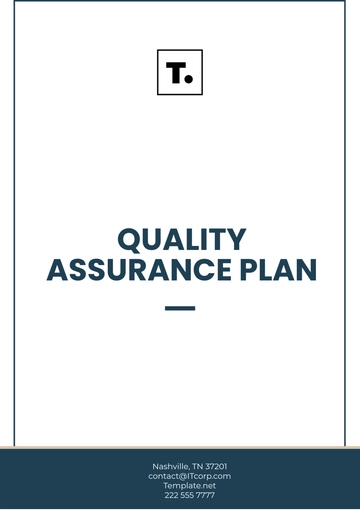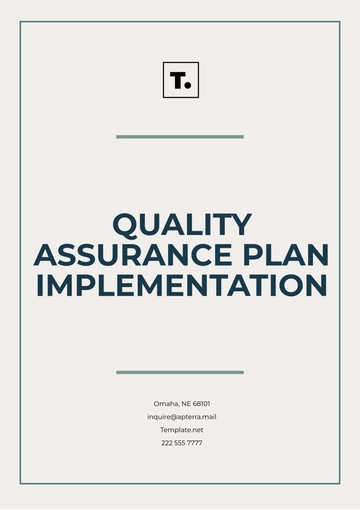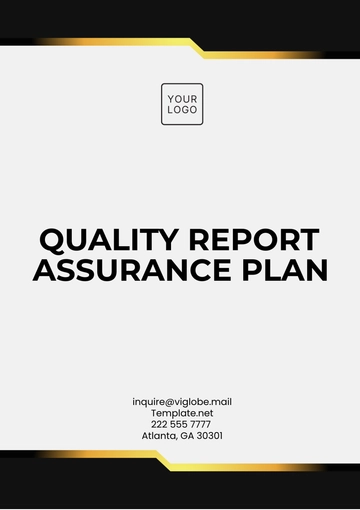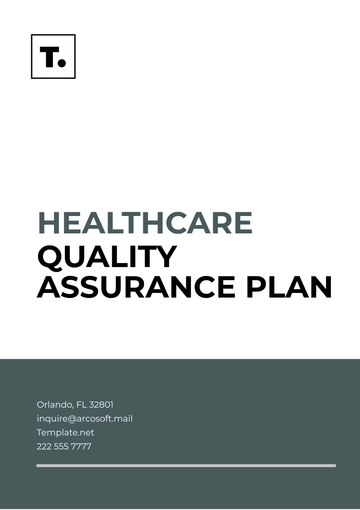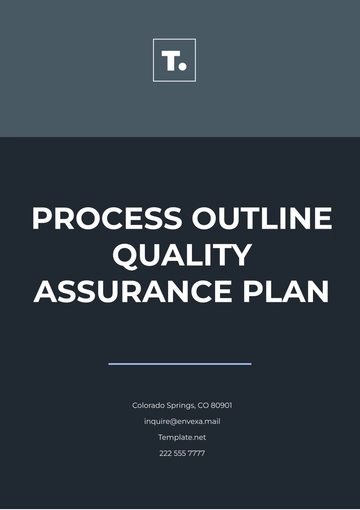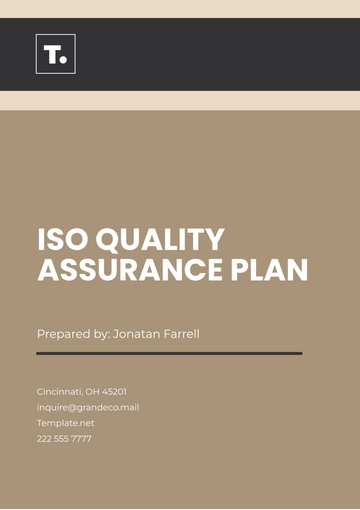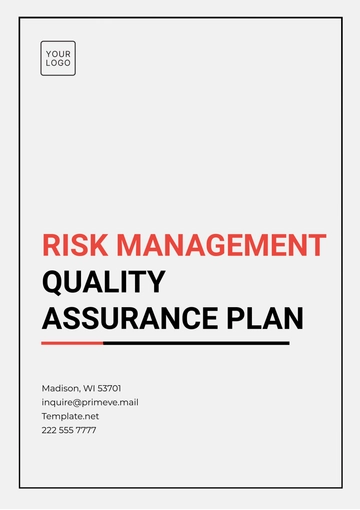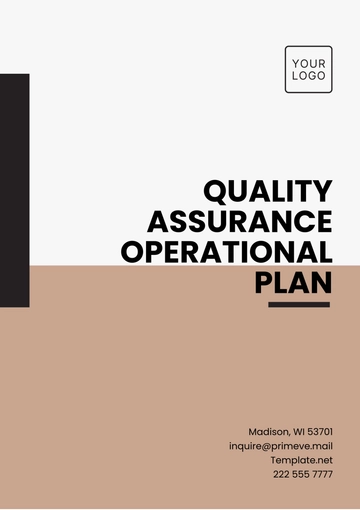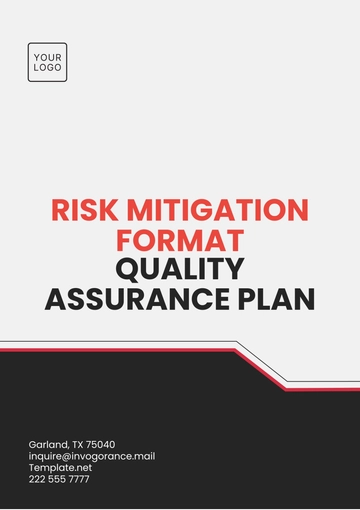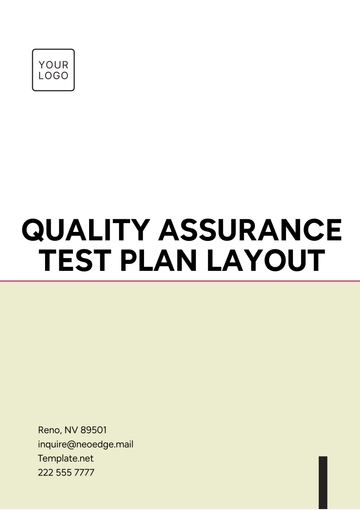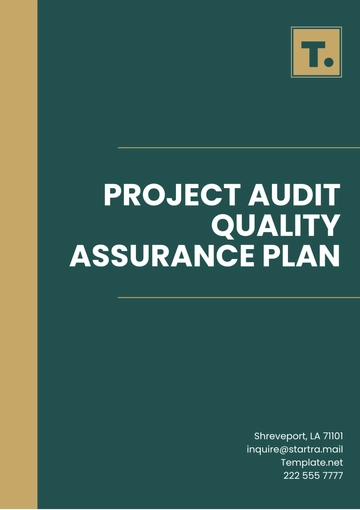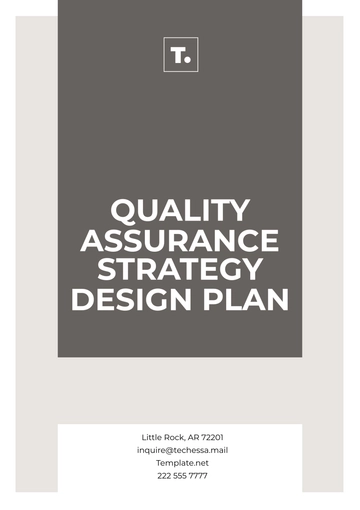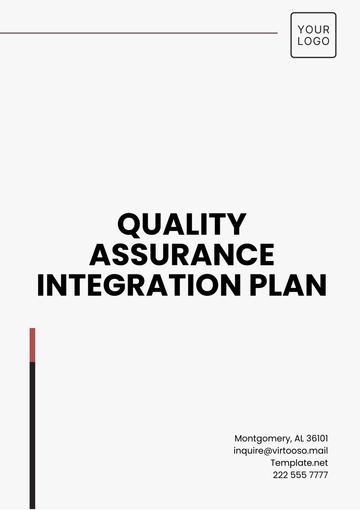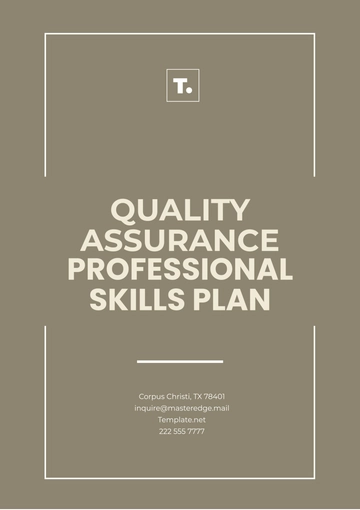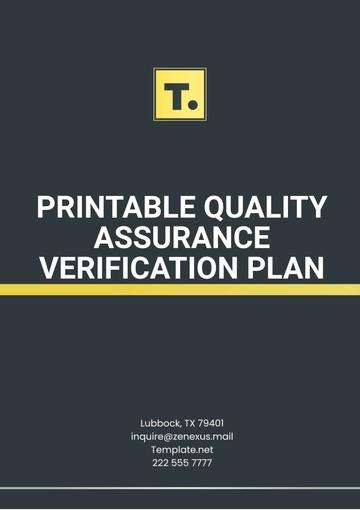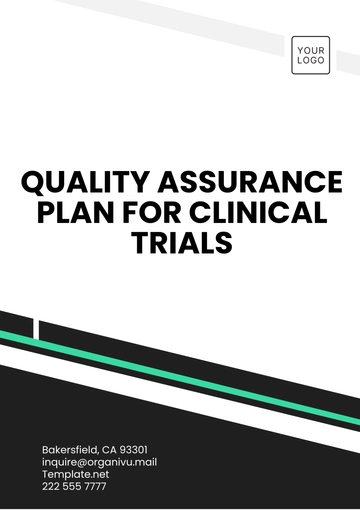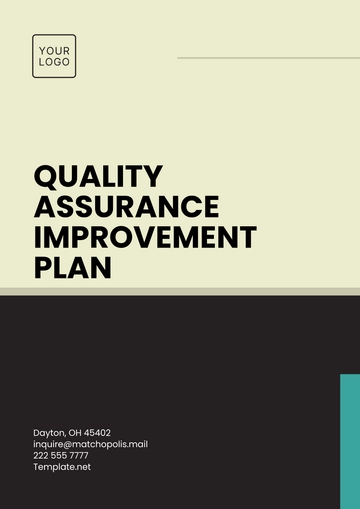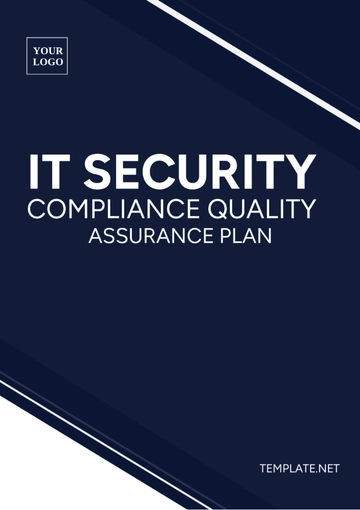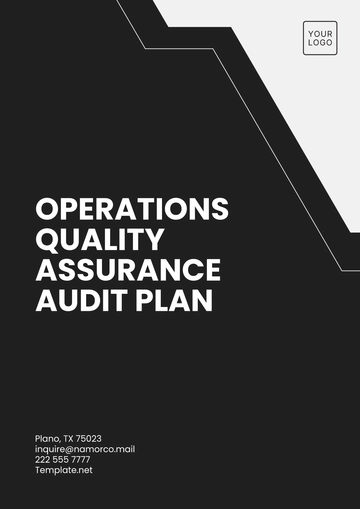Free IT Security Compliance Quality Assurance Plan
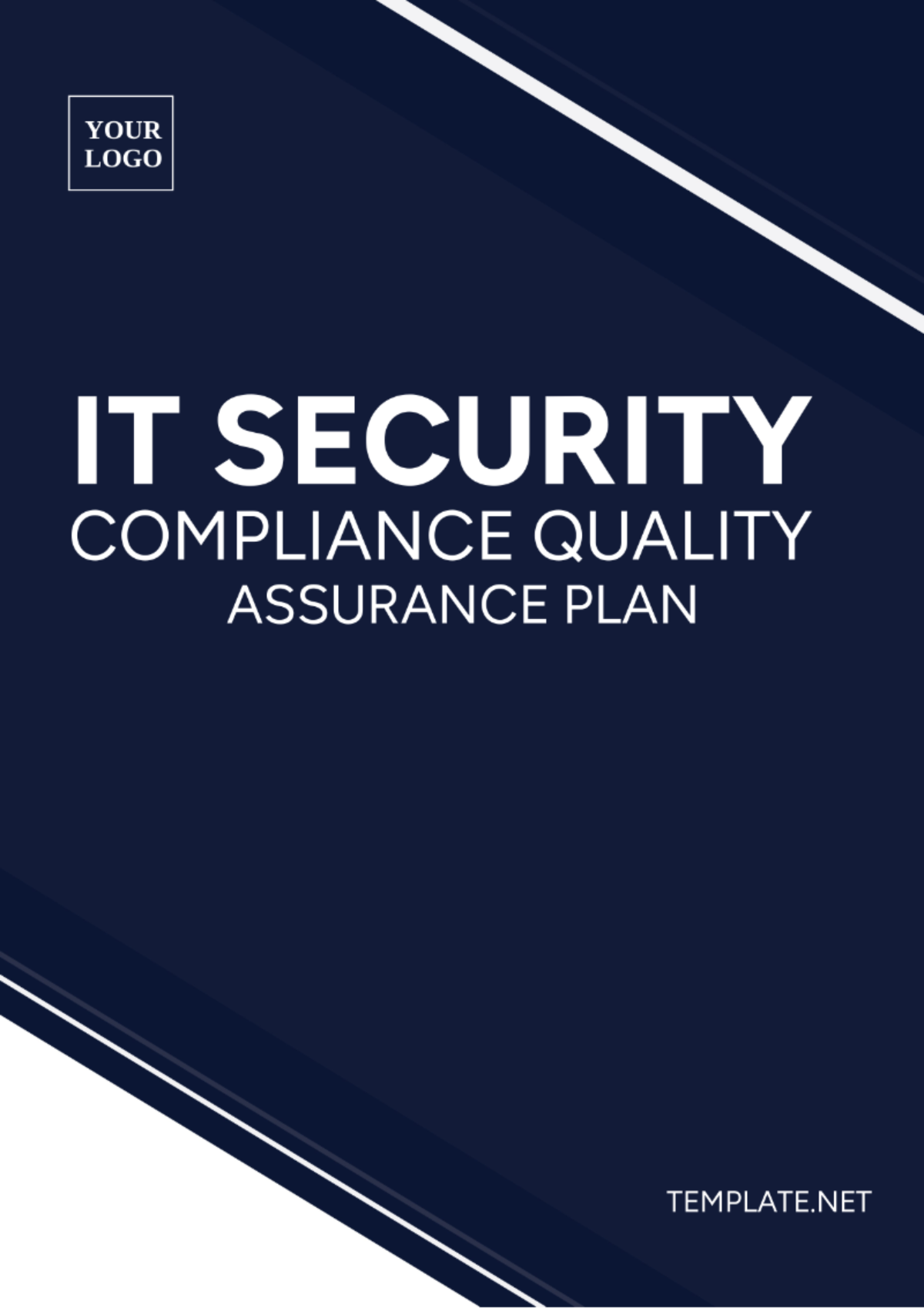
I. Introduction
This section outlines the roles and responsibilities of personnel involved in maintaining IT security compliance within the organization. Clear delineation of roles ensures accountability and effective coordination in achieving compliance objectives.
II. Roles and Responsibilities:
Please check the box to indicate the assigned roles and corresponding responsibilities:
IT Security Officer (ISO):
Responsible for overseeing the implementation and maintenance of IT security compliance measures.
Develops and updates IT security policies and procedures in alignment with relevant regulations and standards.
Conducts risk assessments and identifies areas for improvement in IT security practices.
Compliance Officer:
Ensures that IT security practices comply with applicable laws, regulations, and internal policies.
Coordinates audits and assessments to evaluate compliance status.
Facilitates communication between IT security and other departments to address compliance issues.
System Administrators:
Implements and maintains technical controls to safeguard IT systems and data.
Monitors systems for security incidents and promptly responds to security breaches or vulnerabilities.
Ensures software patches and updates are applied promptly to mitigate security risks.
Network Administrators:
Manages network infrastructure to maintain availability, integrity, and confidentiality of data.
Configures firewalls, routers, and other network devices to enforce security policies.
Monitors network traffic for signs of unauthorized access or malicious activity.
Data Protection Officer (DPO):
Oversees data protection efforts to ensure compliance with data privacy regulations (e.g., GDPR, CCPA).
Conducts privacy impact assessments and advises on data protection measures.
Acts as a point of contact for data subjects and supervisory authorities regarding data privacy matters.
III. Training and Awareness:
Ensure all personnel with IT security responsibilities receive appropriate
training on their roles and compliance requirements.
Conduct periodic awareness sessions to educate employees on IT security
best practices and their role in maintaining compliance.
Maintain records of training activities and ensure documentation of employee
competency in IT security practices.
IV. Communication and Reporting:
Establish channels for effective communication between IT security
personnel and other stakeholders.
Implement procedures for reporting security incidents, non-compliance
issues, and potential risks promptly.
Generate regular reports on compliance status, including findings from
audits, assessments, and remediation efforts.
V. Review and Updates:
Regularly review and update roles and responsibilities based on changes in
regulations, standards, or organizational structure.
Conduct periodic reviews of IT security practices to identify areas for
improvement and ensure ongoing compliance.
Document updates to roles and responsibilities and communicate changes to
relevant personnel.

[YOUR NAME]
Compliance Officer
Date: [INSERT DATE]
- 100% Customizable, free editor
- Access 1 Million+ Templates, photo’s & graphics
- Download or share as a template
- Click and replace photos, graphics, text, backgrounds
- Resize, crop, AI write & more
- Access advanced editor
Elevate your IT security game with Template.net's IT Security Compliance Quality Assurance Plan Template. Crafted with precision, this editable and customizable template ensures seamless adaptation to your organization's unique needs. Effortlessly tailor your compliance strategies with our AI Editor Tool, empowering you to maintain peak security standards while streamlining your processes. Stay ahead with confidence.
You may also like
- Finance Plan
- Construction Plan
- Sales Plan
- Development Plan
- Career Plan
- Budget Plan
- HR Plan
- Education Plan
- Transition Plan
- Work Plan
- Training Plan
- Communication Plan
- Operation Plan
- Health And Safety Plan
- Strategy Plan
- Professional Development Plan
- Advertising Plan
- Risk Management Plan
- Restaurant Plan
- School Plan
- Nursing Home Patient Care Plan
- Nursing Care Plan
- Plan Event
- Startup Plan
- Social Media Plan
- Staffing Plan
- Annual Plan
- Content Plan
- Payment Plan
- Implementation Plan
- Hotel Plan
- Workout Plan
- Accounting Plan
- Campaign Plan
- Essay Plan
- 30 60 90 Day Plan
- Research Plan
- Recruitment Plan
- 90 Day Plan
- Quarterly Plan
- Emergency Plan
- 5 Year Plan
- Gym Plan
- Personal Plan
- IT and Software Plan
- Treatment Plan
- Real Estate Plan
- Law Firm Plan
- Healthcare Plan
- Improvement Plan
- Media Plan
- 5 Year Business Plan
- Learning Plan
- Marketing Campaign Plan
- Travel Agency Plan
- Cleaning Services Plan
- Interior Design Plan
- Performance Plan
- PR Plan
- Birth Plan
- Life Plan
- SEO Plan
- Disaster Recovery Plan
- Continuity Plan
- Launch Plan
- Legal Plan
- Behavior Plan
- Performance Improvement Plan
- Salon Plan
- Security Plan
- Security Management Plan
- Employee Development Plan
- Quality Plan
- Service Improvement Plan
- Growth Plan
- Incident Response Plan
- Basketball Plan
- Emergency Action Plan
- Product Launch Plan
- Spa Plan
- Employee Training Plan
- Data Analysis Plan
- Employee Action Plan
- Territory Plan
- Audit Plan
- Classroom Plan
- Activity Plan
- Parenting Plan
- Care Plan
- Project Execution Plan
- Exercise Plan
- Internship Plan
- Software Development Plan
- Continuous Improvement Plan
- Leave Plan
- 90 Day Sales Plan
- Advertising Agency Plan
- Employee Transition Plan
- Smart Action Plan
- Workplace Safety Plan
- Behavior Change Plan
- Contingency Plan
- Continuity of Operations Plan
- Health Plan
- Quality Control Plan
- Self Plan
- Sports Development Plan
- Change Management Plan
- Ecommerce Plan
- Personal Financial Plan
- Process Improvement Plan
- 30-60-90 Day Sales Plan
- Crisis Management Plan
- Engagement Plan
- Execution Plan
- Pandemic Plan
- Quality Assurance Plan
- Service Continuity Plan
- Agile Project Plan
- Fundraising Plan
- Job Transition Plan
- Asset Maintenance Plan
- Maintenance Plan
- Software Test Plan
- Staff Training and Development Plan
- 3 Year Plan
- Brand Activation Plan
- Release Plan
- Resource Plan
- Risk Mitigation Plan
- Teacher Plan
- 30 60 90 Day Plan for New Manager
- Food Safety Plan
- Food Truck Plan
- Hiring Plan
- Quality Management Plan
- Wellness Plan
- Behavior Intervention Plan
- Bonus Plan
- Investment Plan
- Maternity Leave Plan
- Pandemic Response Plan
- Succession Planning
- Coaching Plan
- Configuration Management Plan
- Remote Work Plan
- Self Care Plan
- Teaching Plan
- 100-Day Plan
- HACCP Plan
- Student Plan
- Sustainability Plan
- 30 60 90 Day Plan for Interview
- Access Plan
- Site Specific Safety Plan
